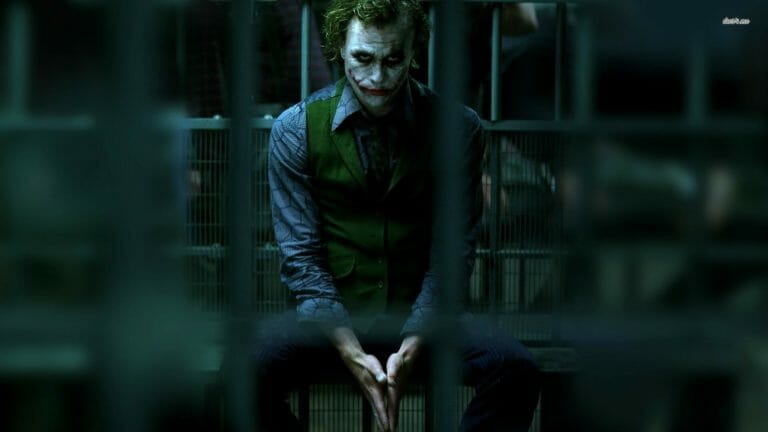By Jeff Legge · December 4, 2017

Every now and again, a film comes along that defies expectations and somehow manages to transcend and redefine its own genre. For comic book movies, that honor undeniably belongs Christopher Nolan’s comic book masterpiece, The Dark Knight. The sequel to Batman Begins, which successfully rebooted the caped crusader after Joel Schumacher’s disastrous Batman & Robin, The Dark Knight wowed critics and audiences with a tale that had as much in common with sprawling crime epics like Heat as it did its own predecessor. And although the genre has shifted in tone thanks to Marvel’s ongoing cinematic universe, The Dark Knight’s influence continues to reverberate throughout film and television.
Of particular note is the film’s iconic rendition of the Joker, played by the late Heath Ledger in what was to be the actor’s final completed role. Ledger passed away months prior to the film’s release, prompting rumors (since debunked) that his intense portrayal of the character was partially to blame. It’s easy to see why, with Ledger’s Joker playing like a twisted combination of Pennywise, Sid Vicious, and Anton Chigurh. Even today, his performance stands as an incredibly transformative accomplishment, easily ranking as one of the most memorable on-screen psychopaths in cinema history.
Then again, Ledger was working off a powerful script, with fantastic dialogue to boot. For screenwriters, the question is how writer Jonathan Nolan managed to pull off such a boldly ambitious and electrifying take on Batman’s most iconic villain. The answer? By breaking the rules.
But first, take a look at our latest script-to-screen video, where we compare the scripted version of the Joker’s “Why so serious?” monologue with the final version.
Aside from serving as a textbook example of slowly bubbling tension, this sequence actually highlights what’s so subversive about the Joker’s characterization in the film. Specifically, he’s an incredibly difficult character to pin down. Conventional screenwriting would have us believe that a credible antagonist should be fully fleshed out. The audience should understand where they come from, and what they want. They should display a sympathetic trait or two, and perhaps possess a motive that is understandable, even when their actions are shockingly reprehensible.
The Dark Knight’s Joker, in comparison, is something of an unknown quantity. Instead of a backstory, we’re treated to several potential origins – none of which is overly likely. This multiple choice approach shrouds the Joker in a layer of mystery that makes his presence in Gotham all the more threatening. As a villain, he just is. He’s an absolute, so to speak – a force of nature, cutting through the screenplay like a knife through butter.
It’s a dehumanizing approach to creating a villain, and much like what the Coen Brothers’ achieved with No Country for Old Men’s Anton Chigurh (see our earlier breakdown here), the result is less of a “character”, and more of a personification of a horrible set of truths. In this case, that truth is that we are closer to anarchy and chaos than we care to acknowledge. The Joker’s philosophy is nihilistic. His goals are murky. As a villain, he believes in nothing and claims to have no agenda or end-game aside from showing Gotham how artificial and disposable ideals of “order” and “justice” truly are.
It flies in the face of the old adage that your characters must be relatable. In the real world, this makes sense – not every evil is relatable, nor easily understood. There are many truths about our world that are nearly impossible to grapple with, and by embracing these truths, screenwriters can create something truly terrifying – even when it cuts against the grain of traditional screenwriting rules.
For all the latest from The Script Lab, be sure to follow us on Twitter, Facebook, and Instagram.